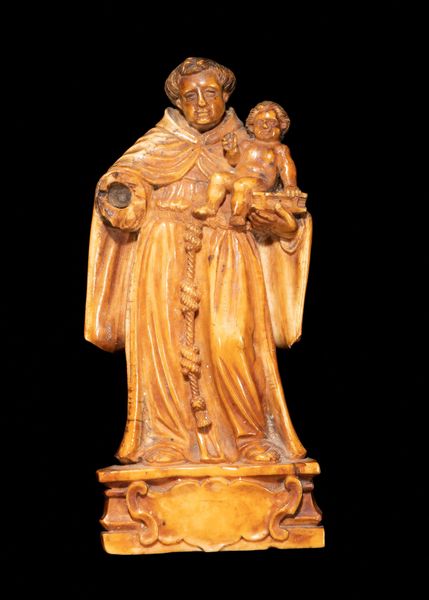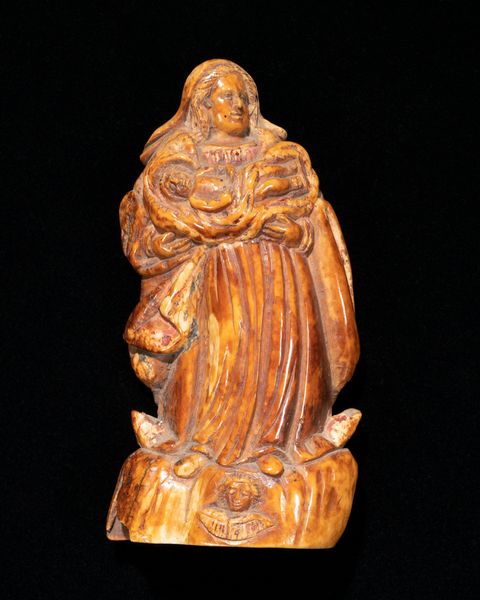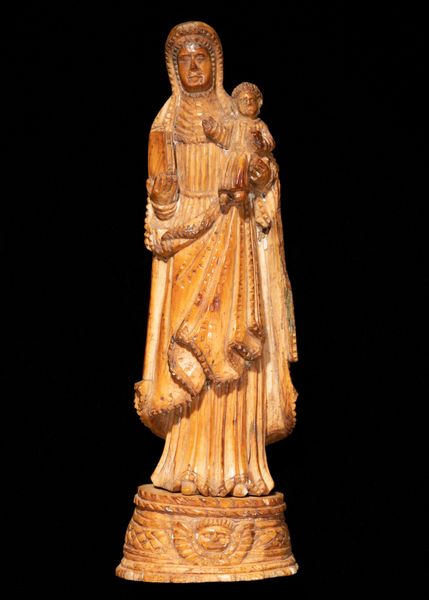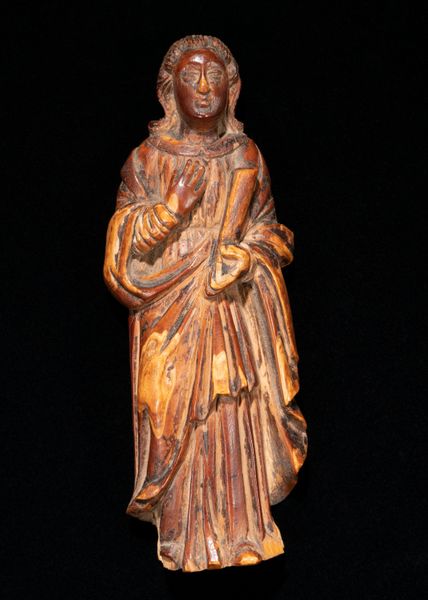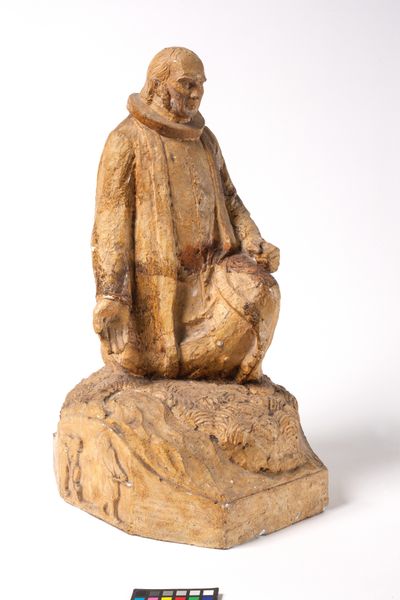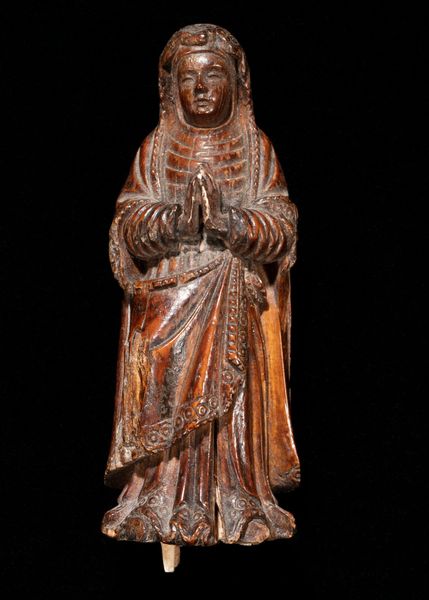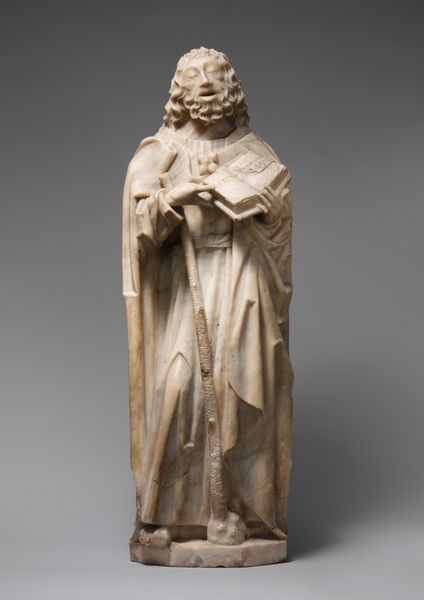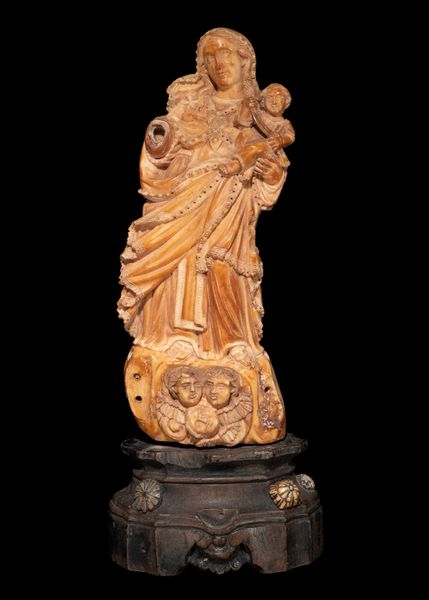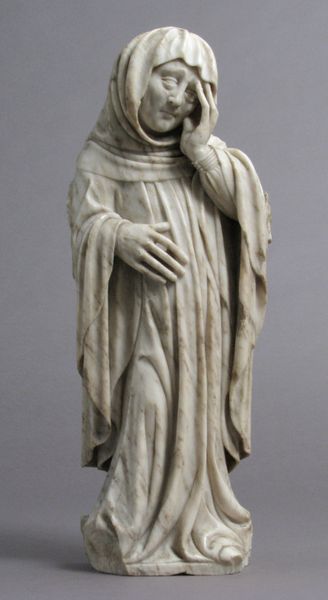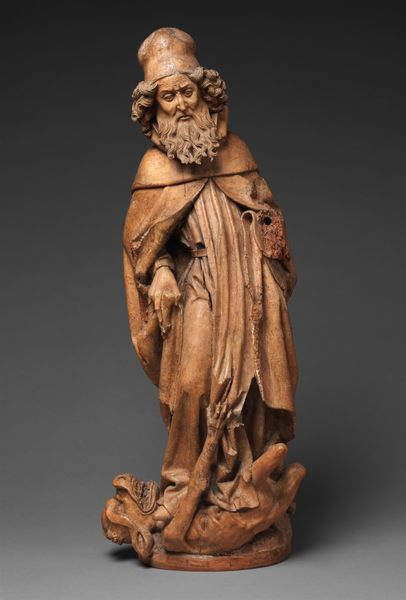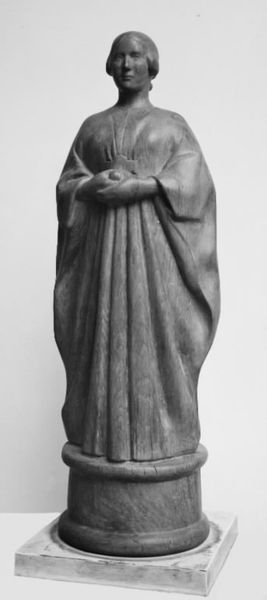
sculpture, ivory
#
portrait
#
baroque
#
sculpture
#
sculpture
#
ivory
Dimensions: 4 11/16 × 1 7/8 × 1 1/8 in. (11.91 × 4.76 × 2.86 cm)
Copyright: Public Domain
This small sculpture of Mary Magdalene was carved from ivory by an unknown artist. The luminous quality of the ivory gives the figure a serene, ethereal presence, befitting a religious icon. Notice how the sculptor has masterfully used the material to create fine details in the drapery and hair. Ivory carving demands precision and patience. The artist would have employed specialized tools to slowly and carefully remove material, revealing the figure within. While we don't know the precise origin of this piece, ivory was a prized material in many cultures, often associated with luxury and status. The act of transforming raw ivory into a devotional object elevates the material, intertwining it with religious and cultural significance. Looking at this sculpture, we can appreciate not only its artistic merit but also the skill, labor, and material that went into its creation. This allows us to challenge traditional notions of art, recognizing the value and artistry present in craft traditions.
Comments
minneapolisinstituteofart about 2 years ago
⋮
The province of Goa in western India was under Portuguese control from 1512–1961, forming a nexus in trading routes that circumnavigated the earth. Goan craftsman were renowned for their supple modeling of ivory (likely exported from Mozambique) into Christian icons, which feed the appetite for luxury products in Europe, as well as furthered evangelical missions throughout Asia and the Americas. Within the genre of Indo-Portuguese ivories, popular subjects include ‘Christ as the Good Shepard’ (the image of Christ as child would have related to similar bronze statuettes of the God Krishna) and the ‘Virgin of the Immaculate Conception,’ which shows Mary atop a crescent moon, both of which remain ever-present icons in South Asia’s diverse religious landscape.
Join the conversation
Join millions of artists and users on Artera today and experience the ultimate creative platform.
